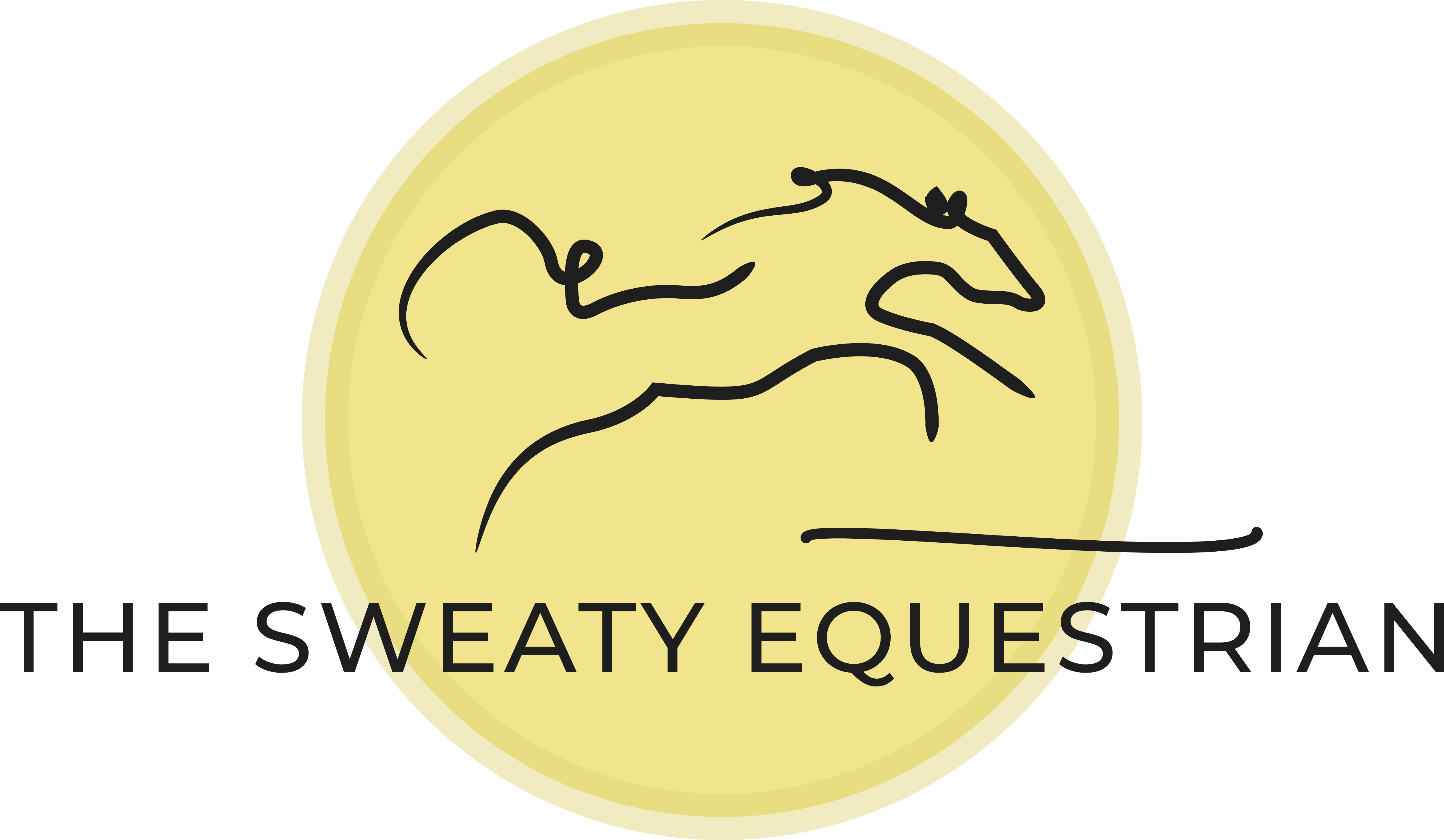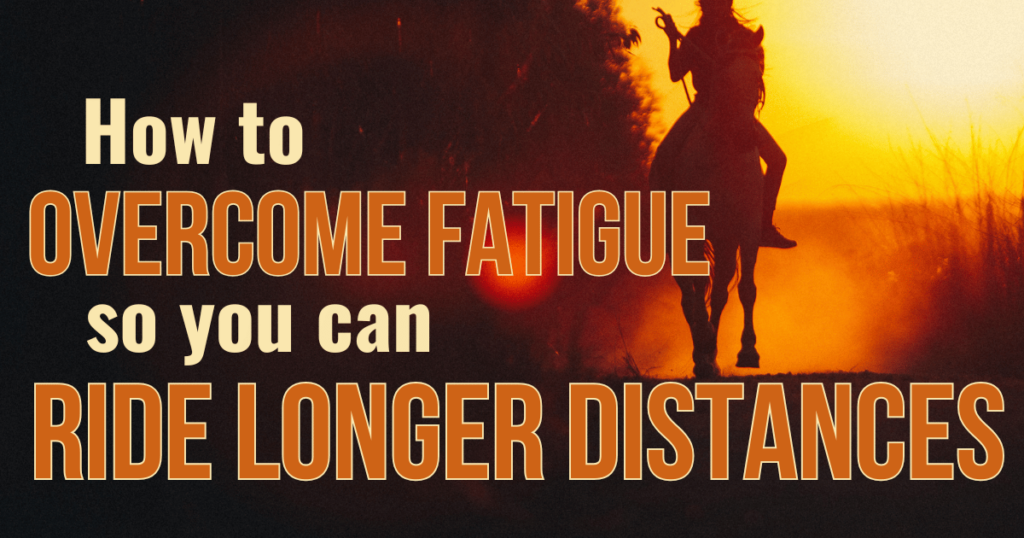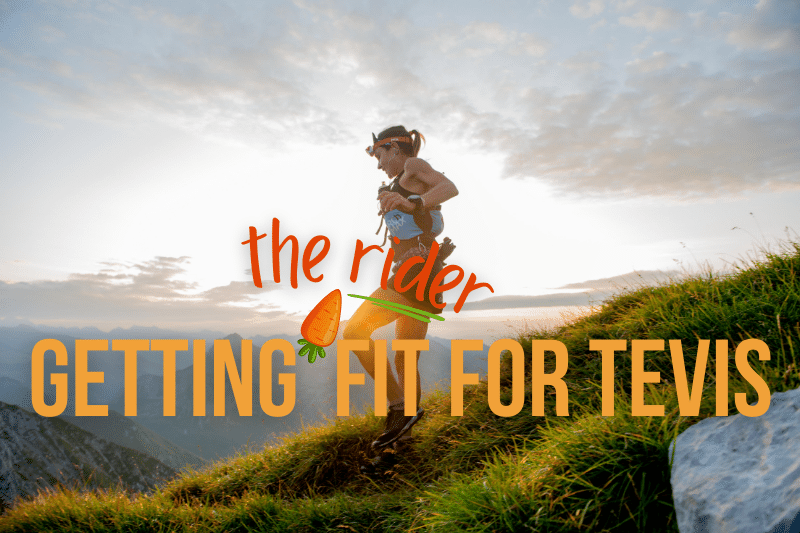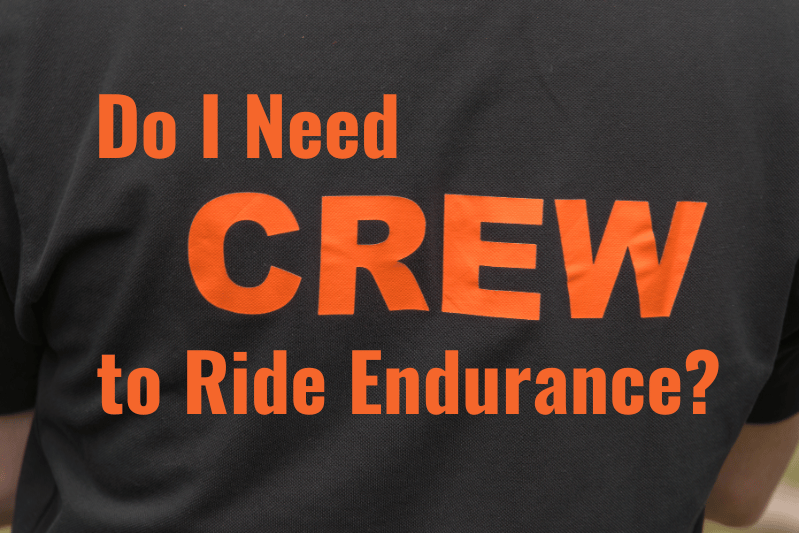Are you hoping to move up to riding longer distances this year? Whether that means entering your first 100 or upshifting from LDs to 50s, one of the first obstacles you’ll need to overcome is fatigue.
We all love the idea of those long endurance rides…when we’re seated on our comfy sofa with a copy of Endurance News in one hand and a mug of tea in the other.
But then, we get out on a twenty-mile conditioning ride. Probably in the rain. Our backs ache, our shoulders slump, and we sure are glad to put that horse away and go inside for some Netflix and chili.
And then we think, Wow. What if I’d still had 30 or 55 or 80 miles left to go? Maybe I’m not cut out for this…
Fatigue is a real barrier to moving up in distance. The good news is, you can overcome it.
The Problem with Fatigue
In the sports medicine literature, fatigue is defined in various ways, my favorite of which is “a disabling symptom in which physical and cognitive function is limited by interactions between performance fatigability and perceived fatigability.” (1)
Now, in English: Fatigue is the loss of physical and mental capacity due to a feeling of being tired.
Yes, a feeling of being tired.
Fatigue is both mental and physical, and it causes loss of both mental and physical capacity. What does that look like?
Nothing good, I’m afraid. Fatigued athletes exhibit:
- Slower reaction times,
- Impaired judgement,
- Poorer posture, and
- Micro-quitting behaviors.
Think about what that means for an endurance rider and her horse!
Slower reaction times could mean failure to stick a spook or guide your horse around a badger hole, increasing the risk of injury to both partners.
Impaired judgement could mean misinterpreting trail markers, choosing the wrong jacket for that last loop, riding too fast in deep footing, or making myriad other decisions that compromise your ability to complete.
Poorer posture could mean making your horse work too hard by flopping around on his back, throwing more weight on his forehand, or limiting his ability to drive through his hindquarters.
Micro-quitting (a sly form of self-sabotage characterized by doing a bit less than you know you ought to) could mean talking yourself out of dismounting to dose with electrolytes halfway through a long loop, or not removing your horse’s boots at the hold to check for debris.
Furthermore, research shows that fatigued athletes “perceive endurance exercise as more effortful despite a similar objective power outfit.” Fatigue also deactivates the internal systems that normally drive us toward reward. (3)
So, fatigue makes you perceive riding as harder and short-circuits your motivation to continue. Great.
In short, the negative impact of fatigue is increased risk of non-completion and injury – or at the very least, a loss of ability to enjoy the ride.
The Antidote to Fatigue
The antidote to fatigue is [drumroll please]…
Stamina.
And what exactly is stamina? Isn’t that just another word for endurance?
Well, not quite.
Sports psychologist Eddie O’Connor explains, “While endurance is about the length of time you can perform an activity, stamina adds a layer to this – it’s about sustaining the energy and strength during that time. Think of endurance as the journey, and stamina as the quality of that journey.” (2)
Ahhh, now we’re getting somewhere.
While fatigue may cost us the ability to complete (and/or enjoy the experience), stamina enables us to sustain energy and strength throughout the ride.
But I don’t have stamina, you say?
Well, I have good news and bad news. The good news is that you can get stamina. The bad news is that it can’t be bought. It must be built.
How to Build Stamina and Overcome Fatigue
https://thesweatyequestrian.com/old-endurance-ride-web-pages/fitness.htmlLike fatigue itself, the stamina to overcome it is found at the intersection of your body and your mind.
As you work toward successfully riding longer distances, you must do more than condition your horse. You must condition your mind to persevere, to maintain focus, and to stay positive. You must convince your brain that fatigue is a perception that you can push past.
And how does one do that?
With exposure to physical challenge. (Hey, I warned you.)
To paraphrase Dr. O’Conner: With repeated exposure, what was grueling becomes manageable as your endurance threshold shifts.
In other words, our brains and bodies get more comfortable with (appropriate) suffering through consistent exposure to challenge.
Running coach Greg McMillan suggests that endurance athletes expose themselves to hard effort one to three times per week. This familiarizes our brains with discomfort, leading us to accept that fact (and yes, it is a fact) that we can operate in a fatigued state.
Given consistent reminders, our brains will stop sending frantic “stop” signals to our bodies when the going gets rough. As a result, we’ll be able to perform at a high level for longer periods.
Okay, you say. That’s all well and good for runners, who can adjust to suffering by running longer and more consistently. But what about endurance riders?
It’s obviously not necessary (or recommended) for us to do 50- or 100-mile conditioning rides ever, let alone weekly. We never ride anywhere near that long until we’re in competition, so how can we train our brains to handle it?
Two ways: First, by making some of our riding more difficult. And second, by pushing ourselves physically without our horses. Let me explain:
There’s no law that says you have to do all your conditioning rides when you feel like it. What if you got out there when you didn’t want to? Learn to ride in a tired body! Saddle up and go for a conditioning ride after a long day at work on too little sleep. Take on the summer’s afternoon heat and the winter’s morning chill. Spend all weekend building fence and stacking hay, then catch your endurance horse for his weekly long ride.
Other times, leave your horse out of it and participate in some endurance exercise of your own. Don a weighted pack for a few hours’ hike in the hills. Train for a half-marathon, or maybe a 50K cycling race or a triathlon. These kinds of challenges will definitely expose your brain to suffering in a way that translates to endurance riding.
As Coach McMillan says, “Suffering isn’t a bad thing – it’s just something we need to be able to deal with.”
Now, I’m not saying you shouldn’t recover, or give your body plenty of fuel and rest. But in truth, most of us don’t have that problem. Most of us don’t give our bodies enough work.
If you want to overcome fatigue and build the stamina to enjoy riding longer distances, you must learn to push through perceived pain, discomfort, and fatigue.
Do it tired. Do it hot. Do it cold. Do it soaked. Do it hungry. Do you like green eggs and ham? Eat them anyway, Sam I Am!
Now, I realize all this sounds counter to our cultural meme of self-care.
To that I say, do you want to ride longer distances, or don’t you?
If that’s your goal, than building stamina is self-care. It’s caring for yourself (not to mention your horse) enough to overcome the fatigue that would otherwise hold you back from your dreams.
Now, let’s be realistic:
Early on, you may not have the physical ability to really push yourself. Your initial challenge may be the discipline of maintaining the consistency necessary to get to the point where you can safely push your body. If you’d like to do that alongside other distance riders, you might want to consider becoming a TSE Extra Mile Member.
However you go about it, find yourself a safe, smart way to get started. Repeatedly set and achieve small goals. Work up to a once-weekly challenge that is significant for you. Practice pushing through. Build your stamina. And overcome.




awesome words! thanks yoU! kimmyyy
Kimmy!! I was JUST talking about you the other day (at the Ride & Tie table at the PNER convention). 🙂